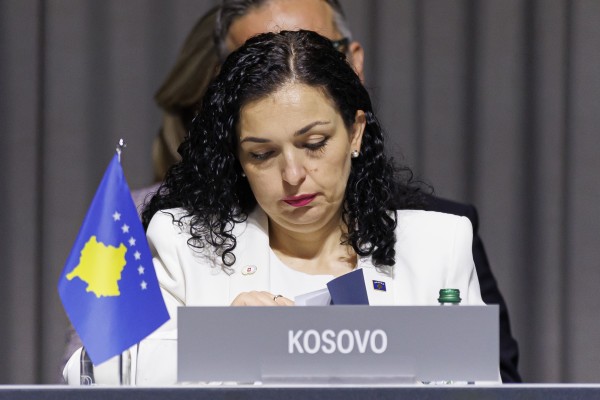Just when it seemed that media outlets in the Baltic states of Estonia, Latvia, and Lithuania had stabilized their financial situation and were growing their revenues, the pandemic struck.
The lockdown accelerated the digital transformation of larger media companies, while at the same time highlighting the vulnerabilities of smaller and regional media outlets.
And with advertisers remaining cautious and the second wave of the pandemic building up, the real challenge for the Baltic news media might still be ahead.
With a total population of 6 million across the three countries, the Baltic media market is small. Its growth is restricted by declining populations and by the increasing flow of advertising euros into the pockets of tech giants like Facebook and Google.
Last year, the value of advertising on TV, radio, newspapers, magazines and internet media in all three countries combined reached just 255 million euros. For comparison, this is only 10 million euros more than the total revenue of the Guardian Media Group, owner of The Guardian and The Observer newspapers.
The Baltic advertising market has been gradually growing during the last decade but has not returned to peak levels seen in 2008. “News media have experienced a tremendous drop in advertising revenue. (…) And, of course, that affects news media viability”, Auksė Balčytienė, professor of journalism at the Vytautas Magnus University in Lithuania said.
Around one-third of the companies that own the 75 most popular media outlets in the Baltics have been operating with losses, according to the Baltic Media Health check, an annual study of Baltic media trends. Still, in recent years more media companies had at least managed to increase their revenue, which is a precondition to turn a profit in future. Then came COVID-19.
The inevitable cuts
As in other countries, the pandemic and the measures to contain it triggered a large drop in advertising revenue, which most media in the Baltic countries still depend on. This meant that cost saving was inevitable. Several media houses across the Baltic countries either temporarily or permanently cut employee wages, and some laid off employees.
The virus’s impact was double-edged. On one hand, there was a strong demand from the public for news, which led to the media regaining significance, Balčytienė said. On the other hand, newsrooms had to scramble to provide more information with fewer resources.
“The decline in revenue meant that the diversity of content declined fairly quickly”, Anda Rožukalne, professor of communication science at Riga Stradins University in Latvia, said.
According to Rožukalne, the first thing some media did was cut their collaboration with freelancers. Other outlets looked to save costs by reducing their publishing frequency. All these measures meant that media focused on covering mainly the virus and its consequences and little else.
In addition, as savings had to be made, the use of “ready-made information” increased, Rožukalne added. “The media became, to a much greater extent, a channel for the government (…) to reach the public, which is, of course, a very important function. However, there was a lack of critical appraisal”, she said. She added that the media worked well and responsibly during the pandemic, and that therefore the overall level trust in media had not changed much.
Ragne Kõuts-Klemm, associate professor of the sociology of journalism at the University of Tartu in Estonia, also observed that the media often simply replicated the content offered by experts and state officials. “On the other hand, they were able to create a constant flow of news. It was really huge work”, she said.
The digital push
The limited resources and as well as the lockdown also accelerated the digital transformation. Kõuts-Klemm said that looking for new ways to present content and organizing remote work helped both journalists and news organizations develop their digital capabilities.
The crisis also provided an opportunity to make necessary, if sometimes radical, changes. For example, the Estonian business newspaper Äripäev changed from a daily to a weekly publication. Meanwhile, in Latvia, one of the three remaining national dailies, Neatkarīgā Rīta Avīze (which translates to “Independent Morning Newspaper”), decided to end its print edition and go digital only. The paper had been operating at a loss for years.
Online news sites saw a steep increase in their audience during the lockdown, a development some media managed to monetize, even if it remains unclear exactly to what extent this has offset the drop in advertising revenue. Estonia is the most advanced of the three Baltic countries when it comes to paywalls and readers’ commitment to pay for online content. During the spring, the number of digital subscribers in Estonia jumped by 15 percent, according to the Estonian Association of Media Enterprises. Now, at the end of September, there were nearly 114,000 paid digital subscriptions in a nation of just 1.3 million.
Ekspress Grupp, the owner of Delfi, the most popular online news site in the Baltics, as well as numerous newspapers and magazines, said that digital subscriptions of its publications reached 63,000 subscribers across all three countries at the end of June, an increase of 26 percent compared to the end of 2019.
Those lagging behind: Regional and local press
The development of digital products is nothing new to larger media houses in the region, which, thanks to being mostly profitable and market leaders, are also in a better position to weather the pandemic. However, the lockdown highlighted the degree to which smaller and regional publications are lagging behind, Rožukalne, from Latvia’s Riga Stradins University, said.
“Regional media invest a lot in digital content, but they lack resources to develop technological capabilities, which means they did not have resources to monetize the growth in audience”, she noted.
The situation is similar in Estonia, Kõuts-Klemm said. She considers the limited funding of local media to be a threat to their viability. “Local media have especially low resources and no resources for digital development,” Kõuts-Klemm explained, adding that the establishment of a special fund to support a digital leap by regional media might be helpful.
Balčytienė said that in Lithuania it also was the regional media that suffered the most in the crisis. The closed post offices meant that print issues could not be delivered to the subscribers, while closed shops meant a loss in newspaper sales. “Many of those small newspapers are in a very uncertain situation, especially now because there is the second wave of the pandemic epoch and there is a lot of uncertainty going on”, she added.
Lifting the lockdown has revived the advertising market. But what has been lost cannot be entirely regained. Lithuania expects that its advertising market will decline this year by around 10 percent, helped in part by political advertising driven by the country’s parliamentary elections in October. In Latvia, whose capital city Riga held council elections in August, the advertising market is expected to shrink by 10 to 15 perfect percent, while in Estonia the market might decline by as much as 25 percent in 2020. That does not indicate a rosy future.
“I think the consequences might become visible around the spring of the next year”, Rožukalne said. “It is possible that some media might exit the market – they simply might not be able to make it. They have some savings to sustain them for now, but that time is not infinite.”
- Click here to read more from IPI’s new reporting series Media Freedom in Europe in the Shadow of Covid




